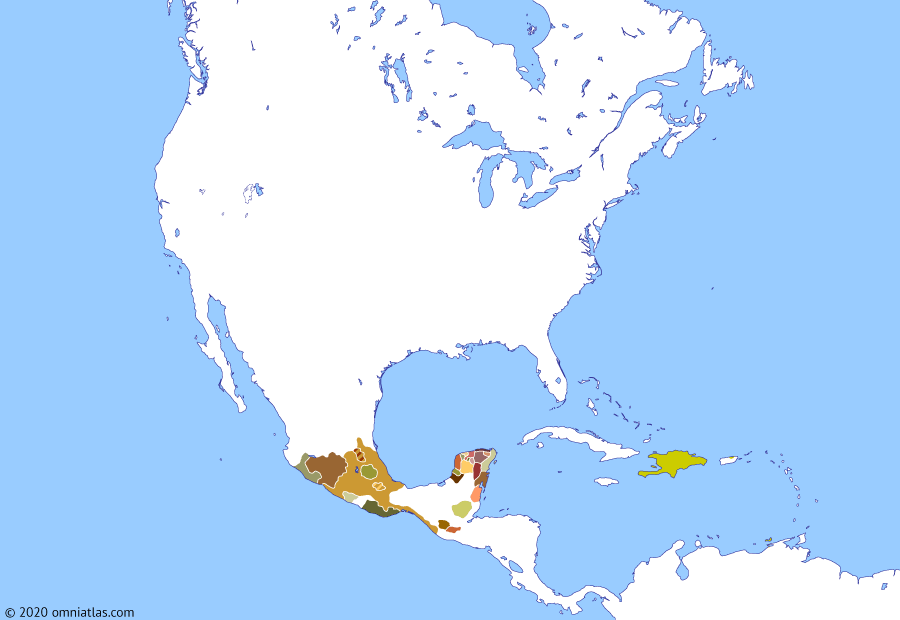North America 1508: Colonization of Puerto Rico
8 August 1508
8 Aug 1508
Colonization of Puerto Rico
12 Oct 1492 Arrival of Columbus
26 Dec 1492 First contacts
6 Jan 1494 Columbus’ second voyage
4 Aug 1496 Colony of Santo Domingo
24 Jun 1497 John Cabot’s expeditions
23 Aug 1500 Fall of Columbus
7 Jan 1503 First Spanish attempts on the Mainland
8 Aug 1508 Colonization of Puerto Rico
15 Aug 1511 Spanish expansion in the Caribbean
In 1508 the Spanish explorer Ponce de León led an expedition from Santo Domingo to colonize the adjacent island of San Juan Bautista (Puerto Rico). Defeating indigenous resistance, the Spanish secured control over the island during the 1510s. Spain’s longest-lasting New World colony, Puerto Rico would remain under Spanish rule until the US occupied it in 1898.
